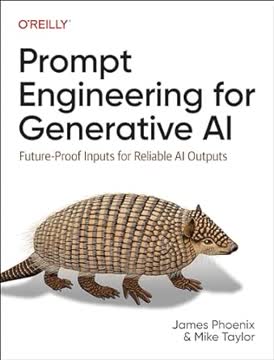Key Takeaways
1. Master the Five Principles of Prompt Engineering
The absolute best book-length resource I’ve read on prompt engineering.
Prompt engineering is crucial. The quality of AI output heavily depends on the input, making prompt engineering—the process of reliably yielding desired results—an indispensable skill. As AI models improve, naive prompts might yield acceptable results for one-off tasks, but for production-level applications, investing in well-engineered prompts is essential to ensure accuracy, reliability, and cost-efficiency. Mistakes in prompting can lead to wasted computational resources and time spent on corrections.
Five core principles. Effective prompt engineering is built upon five timeless, model-agnostic principles that enhance AI interactions, whether for text or image generation. These principles address common issues like vague instructions, unformatted outputs, lack of examples, limited evaluation, and monolithic tasks. By applying these, developers can coax out reliable results from AI models, transforming them from unpredictable tools into dependable components of automated systems.
Principles for success:
- Give Direction: Describe desired style or reference a persona.
- Specify Format: Define rules and required output structure (e.g., JSON, bullet points).
- Provide Examples: Insert diverse test cases of correct task completion (few-shot learning).
- Evaluate Quality: Identify errors and rate responses to optimize performance.
- Divide Labor: Split complex tasks into multiple, chained steps for clarity and visibility.
2. Understand Foundational AI Models for Text and Image Generation
Large language models (LLMs) and diffusion models such as ChatGPT and DALL-E have unprecedented potential.
LLMs: The essence of language. Text generation models, or Large Language Models (LLMs), like OpenAI's GPT series, Google's Gemini, and Meta's Llama, are trained on vast datasets to understand and produce human-like text. They operate by tokenizing text into numerical vectors, using transformer architectures to grasp contextual relationships, and then probabilistically predicting the next token. This enables them to perform diverse tasks from content writing to code generation, making them versatile tools for automation.
Diffusion models: Images from noise. Diffusion models, exemplified by DALL-E, Midjourney, and Stable Diffusion, generate images from text by iteratively adding and then reversing random noise. They learn to denoise images based on descriptions, effectively mapping text prompts to visual representations in a continuous "latent space." This process allows them to replicate various art styles and subjects, transforming text into stunning visual content and opening new avenues for creative expression.
Key model distinctions:
- LLMs: Focus on text generation, understanding, and reasoning.
- Diffusion Models: Specialize in image generation from text.
- Training Data: Both rely on massive datasets, inheriting biases.
- Parameters: Models like GPT-4 boast trillions of parameters, requiring immense computational resources for training.
3. Standardize Text Generation with Practical Prompting Techniques
Simple prompting techniques will help you to maximize the output and formats from LLMs.
Structured output is key. When integrating LLMs into production systems, consistent and parseable output formats are critical. While LLMs can generate diverse formats like lists, JSON, YAML, or even code, explicitly instructing the model on the desired structure (e.g., "Return only valid JSON," "Never include backtick symbols") prevents parsing errors and ensures programmatic usability. Providing examples of the desired format significantly improves reliability, reducing the need for complex post-processing.
Context and clarity matter. LLMs can act as intelligent agents, capable of asking for more context when a query is ambiguous, leading to more informed decisions. Techniques like "Explain It Like I'm Five" simplify complex topics, while "Text Style Unbundling" allows extracting and replicating specific writing characteristics (tone, vocabulary, structure) for consistent content generation. These methods enhance the AI's ability to deliver tailored and high-quality responses.
Practical techniques for text generation:
- Generating Lists/JSON/YAML: Specify desired length, format, and avoid commentary.
- Explain It Like I'm Five: Simplify complex text for broader understanding.
- Ask for Context: Encourage the LLM to request more information for better answers.
- Text Style Unbundling: Extract stylistic features to apply to new content.
- Summarization: Condense large texts, even with context window limitations, using chunking.
- Sentiment Analysis: Classify text sentiment (positive, negative, neutral) with clear instructions and examples.
- Least to Most: Break down complex problems into sequential steps for detailed solutions.
- Role Prompting: Assign a specific persona to guide the AI's response style and content.
- Avoiding Hallucinations: Instruct the model to use only provided reference text.
- Give Thinking Time: Encourage step-by-step reasoning for more accurate results.
4. Build Advanced LLM Workflows with Frameworks like LangChain
To skillfully tackle such complex generative AI challenges, becoming acquainted with LangChain, an open source framework, is highly beneficial.
LangChain: Orchestrating LLMs. For complex generative AI problems like summarizing entire books or performing intricate reasoning, frameworks like LangChain are invaluable. LangChain provides modular abstractions for interacting with LLMs, enabling developers to enhance data awareness and agency. It simplifies the integration of diverse models (OpenAI, Anthropic, etc.) by offering a unified interface, streamlining prompt engineering and model evaluation.
Chains and prompt templates. LangChain's core strength lies in its "Chains" (or Runnables) and "Prompt Templates." Chains allow sequential execution of LLM operations, breaking down complex tasks into manageable steps. Prompt templates enable reproducible and validated prompts, supporting dynamic input variables and few-shot examples. The LangChain Expression Language (LCEL) uses a pipe operator (|) to chain components, making workflows intuitive and efficient.
Advanced components for complex tasks:
- Output Parsers: Automatically structure LLM string responses into formats like JSON (e.g., Pydantic parser).
- LangChain Evals: Measure prompt performance using evaluation metrics, often leveraging smarter LLMs (like GPT-4) to evaluate smaller models.
- Function Calling: Enable LLMs to execute predefined functions (e.g., API calls, database interactions) by generating JSON responses with function names and arguments.
- Task Decomposition & Prompt Chaining: Break down high-level goals into sub-problems, chaining multiple LLM calls to build up knowledge incrementally.
5. Leverage Vector Databases and RAG for Contextual AI
A vector database is a tool most commonly used for storing text data in a way that enables querying based on similarity or semantic meaning.
Embeddings: Language as numbers. Words and images can be represented as high-dimensional numerical vectors (embeddings), where semantic similarity is reflected by proximity in latent space. These embeddings, generated by models like OpenAI's text-embedding-ada-002 or Hugging Face's Sentence Transformers, are crucial for enabling AI to understand context and relationships beyond exact keyword matches. The accuracy of these vectors depends entirely on the underlying embedding model's training data and biases.
Vector databases: Semantic search. Vector databases store these embeddings, allowing for efficient querying based on semantic similarity rather than traditional keyword matching. This technology is fundamental to Retrieval Augmented Generation (RAG), a pattern that significantly reduces AI hallucinations by dynamically injecting relevant, external data into prompts. RAG is vital for providing up-to-date or niche domain knowledge that the LLM wasn't trained on, enhancing accuracy and reliability.
RAG workflow and benefits:
- Chunking: Break large documents into smaller, context-preserving segments (e.g., using recursive character splitting).
- Indexing: Store these chunks and their embeddings in a vector database (e.g., FAISS for local, Pinecone for hosted).
- Retrieval: Search for the
kmost semantically similar documents to a user query. - Context Injection: Insert retrieved documents into the LLM's prompt as context for its response.
- Benefits: Decreases hallucinations, provides up-to-date information, enables long-term memory for chatbots, and reduces token costs by only passing relevant context.
6. Develop Autonomous Agents with Reasoning and Tools
This chapter dives deeper into the importance of chain-of-thought reasoning and the ability of large language models (LLMs) to reason through complex problems as agents.
Agents: AI with purpose. Autonomous agents extend LLMs beyond simple text generation, enabling them to perceive environments, make decisions, and take actions to achieve predefined objectives. An agent's behavior is governed by its inputs (sensory data, text), a goal/reward function, and available actions (tools). For LLMs, inputs are primarily textual, goals are defined in prompts, and actions are executed via integrated tools like API calls or file system interactions.
Chain-of-Thought (CoT) and ReAct. CoT reasoning guides LLMs to break down complex problems into smaller, logical steps, leading to more thorough solutions. The ReAct (Reason and Act) framework builds on CoT by allowing the LLM to generate thoughts, decide on actions using tools, and then observe the results. This iterative loop of "Observe, Think, Act, Observe" continues until a solution is found, making agents capable of tackling multi-step problems.
Key components of agents:
- Tools: Predefined functions (e.g., Calculator, Google Search, custom Python functions) that expand the LLM's capabilities beyond text generation.
- Memory: Crucial for maintaining context across interactions. LangChain offers various memory types (e.g.,
ConversationBufferMemory,ConversationSummaryMemory) to store chat history or summarized conversations. - Agent Planning/Execution: Strategies like "Plan-and-Execute" (e.g., BabyAGI) separate task planning from execution, while "Tree of Thoughts" explores multiple reasoning paths for complex problem-solving.
- Callbacks: LangChain's callback system allows monitoring and debugging agent execution, tracking events like LLM starts, tool usage, and errors.
7. Apply Standard Practices for Image Generation
In this chapter, you’ll use standardized techniques to maximize the output and formats from diffusion models.
Format and style modifiers. The most basic yet powerful technique in AI image generation is specifying the desired format (e.g., "stock photo," "oil painting," "ancient Egyptian hieroglyph") and art style (e.g., "in the style of Van Gogh," "Studio Ghibli"). These modifiers significantly alter the image's aesthetic and content, allowing for infinite creative possibilities. Understanding how different formats and styles influence the output is crucial for guiding the diffusion model effectively.
Refining image generation:
- Quality Boosters: Adding terms like "4k," "very beautiful," or "trending on ArtStation" can subtly improve image quality without drastically changing the style, as these terms were associated with high-quality images in training data.
- Negative Prompts: Using
--no(Midjourney) or negative prompt boxes (Stable Diffusion) allows users to specify unwanted elements (e.g., "frame," "wall," "cartoon"), helping to separate intertwined concepts in the training data. - Weighted Terms: Adjusting the influence of specific words or concepts in a prompt (e.g.,
::in Midjourney,()in Stable Diffusion) provides fine-grained control over the image's composition and style blend. - Prompting with an Image (Img2Img): Supplying a base image along with text (e.g., Midjourney's image links, Stable Diffusion's Img2Img tab) guides the model's style, scene, or composition, acting as a powerful visual example.
8. Unlock Advanced Image Control with Stable Diffusion
Most work with AI images only requires simple prompt engineering techniques, but there are more powerful tools available when you need more creative control over your output, or want to train custom models for specific tasks.
AUTOMATIC1111: The power user's UI. While basic image generation can be done via APIs or simpler interfaces, AUTOMATIC1111's Stable Diffusion WebUI offers unparalleled control and access to a vibrant open-source community's extensions. It allows fine-tuning parameters like sampling steps, CFG scale, and random seed, and supports advanced features like prompt weights and prompt editing (switching prompts mid-generation for nuanced effects). This interface is key for deep experimentation and customization.
Advanced control techniques:
- Img2Img: Beyond simple image prompting, this feature allows precise control over denoising strength, determining how much of the original image's structure is preserved versus how much new content is generated.
- Upscaling: Increase image resolution using specialized upscalers (e.g., R-ESRGAN 4x+) within the UI, enhancing detail and quality for practical use.
- Interrogate CLIP: Reverse-engineer prompts from existing images, similar to Midjourney's Describe feature, to understand the underlying textual representations.
- Inpainting & Outpainting: Selectively regenerate or expand parts of an image using masks, allowing for precise edits or creative scene extensions while maintaining consistency.
- ControlNet: A groundbreaking extension that provides granular control over image composition, pose, depth, and edges by conditioning the generation process with an input image (e.g., Canny edge detection, OpenPose for human figures).
- Segment Anything Model (SAM): Automatically generate precise masks for objects or areas within an image, facilitating advanced inpainting and compositing workflows.
9. Integrate AI Components for End-to-End Applications
In this chapter, you’ll get the chance to put everything you’ve learned throughout this book into action.
Building a complete AI system. The ultimate goal of prompt engineering is to integrate various AI components into cohesive, end-to-end applications that solve real-world problems. This involves chaining together LLMs, vector databases, and diffusion models, applying all the principles learned. For instance, an AI blog writing service can combine topic research, expert interviews, outline generation, text generation, and image creation into a single automated workflow.
Workflow for AI content generation:
- Topic Research: Use LLMs and web scraping tools (e.g., SERPAPI) to gather and summarize relevant web content, providing foundational knowledge.
- Expert Interview: Conduct an "interview" with an LLM, generating targeted questions to elicit unique insights and opinions from the user, ensuring original content.
- Outline Generation: Combine research summaries and interview insights to generate a structured blog post outline, guiding the content creation process.
- Text Generation: Write each section of the blog post, leveraging embeddings for relevant document retrieval, custom memory to avoid repetition, and bespoke context from research and interviews.
- Writing Style Optimization: Fine-tune the generated text to match a specific human-like writing style, often requiring iterative prompt optimization and A/B testing with evaluation metrics like embedding distance.
- Title Optimization: Generate and test various titles to maximize engagement and SEO performance.
- AI Blog Images: Automate image creation by having an LLM generate image prompts based on the article's content, then feeding these to a diffusion model (e.g., Stable Diffusion with Corporate Memphis style) for consistent visual branding.
- User Interface: Prototype the application with simple, accessible UIs (e.g., Gradio, Streamlit) to gather early user feedback before investing in complex production-ready frontends.
Last updated:
FAQ
What is Prompt Engineering for Generative AI: Future-Proof Inputs for Reliable AI Outputs by James Phoenix about?
- Comprehensive guide to prompting: The book provides an in-depth exploration of prompt engineering for generative AI models, including both text and image generation.
- Five core principles: It introduces five foundational, model-agnostic principles for crafting effective prompts, ensuring skills remain relevant as AI evolves.
- Practical focus: Readers learn actionable techniques for improving AI output reliability, accuracy, and creativity, with real-world coding examples.
- Covers broad AI landscape: The book addresses large language models (LLMs), vector databases, autonomous agents, and diffusion models, offering a holistic view of generative AI workflows.
Why should I read Prompt Engineering for Generative AI by James Phoenix?
- Future-proof your AI skills: The book equips readers with enduring, transferable skills for working with current and future AI models.
- Improve AI output quality: It teaches how to design prompts that reduce hallucinations, increase reliability, and optimize token usage.
- Industry relevance: Endorsed by AI leaders, the book is positioned as essential reading for anyone aiming to work effectively with AI in production.
- Hands-on learning: Includes practical code snippets and workflow examples, making it suitable for both beginners and experienced practitioners.
What are the five core principles of prompt engineering in Prompt Engineering for Generative AI?
- Give Direction: Clearly specify the desired style, persona, or task to guide the AI’s reasoning and output.
- Specify Format: Define the expected output format (e.g., JSON, lists, markdown) to ensure structured, machine-readable responses.
- Provide Examples: Use few-shot or one-shot examples to demonstrate ideal outputs, improving consistency and reducing ambiguity.
- Evaluate Quality: Systematically test and refine prompts using metrics or human feedback to optimize performance.
- Divide Labor: Break complex tasks into smaller subtasks or chains for better control, debugging, and output quality.
How does Prompt Engineering for Generative AI explain working with Large Language Models (LLMs) for text generation?
- LLM foundations: The book covers tokenization, vector representations, and transformer architecture, providing an intuitive understanding of how LLMs like GPT-4 generate text.
- Probabilistic outputs: It explains the non-deterministic nature of LLMs and why prompt design is crucial for reliable results.
- Model comparisons: Readers learn about major LLMs (OpenAI’s GPT, Google’s Gemini, Meta’s Llama, Anthropic’s Claude), their strengths, and context window limitations.
- Practical techniques: The book demonstrates methods for generating structured outputs, simplifying text, translation, and sentiment analysis.
What are the best practices for text generation with ChatGPT and other LLMs in Prompt Engineering for Generative AI?
- Structured output generation: Techniques for producing bullet lists, hierarchical outlines, and machine-readable formats like JSON/YAML are explained with code examples.
- Simplification and translation: The book shows how to prompt LLMs to explain complex topics simply or translate between languages and code.
- Classification and sentiment analysis: It covers prompt engineering for zero-shot and few-shot classification, including handling mixed sentiments.
- Evaluation and iteration: Readers learn to systematically test and refine prompts for improved accuracy and reliability.
How does Prompt Engineering for Generative AI address handling large documents and LLM context window limitations?
- Chunking strategies: The book details methods for splitting text by sentence, paragraph, topic, or token count to fit within LLM context windows.
- Sliding window technique: Overlapping chunks are recommended to preserve semantic context and minimize information loss.
- Recursive splitting: Recursive character splitting by multiple delimiters helps maintain structure and meaning in manageable chunks.
- Improved processing efficiency: These strategies enable effective processing of long documents without exceeding model limits.
How does Prompt Engineering for Generative AI explain the use of vector databases like FAISS and Pinecone?
- Embeddings and similarity search: The book introduces embeddings as high-dimensional vectors for semantic search, enabling retrieval beyond keyword matching.
- Document chunking for retrieval: It emphasizes chunking large documents into meaningful pieces to improve retrieval accuracy and reduce token usage.
- Retrieval-Augmented Generation (RAG): Readers learn how to inject relevant document chunks into prompts, reducing hallucinations and improving answer relevance.
- Practical tools: The book covers using FAISS (local) and Pinecone (hosted) for storing and querying embeddings.
What are autonomous agents and how does Prompt Engineering for Generative AI cover them?
- Agent architecture: Agents are described as systems that perceive inputs, have goals, and act in loops to solve complex tasks.
- ReAct framework: The book explains the Reason and Act (ReAct) method, where LLMs iteratively reason, observe, and act using tools.
- Memory integration: It covers both short-term and long-term memory for maintaining context and storing knowledge.
- Tool usage: Readers learn to extend agent capabilities with custom functions and prebuilt toolkits.
How does Prompt Engineering for Generative AI approach image generation with diffusion models like Stable Diffusion and Midjourney?
- Diffusion model fundamentals: The book explains how these models generate images by denoising random noise conditioned on text prompts.
- Model comparisons: It compares DALL-E, Midjourney, and Stable Diffusion, highlighting their unique features and community aspects.
- Prompt engineering for images: Techniques include using format and style modifiers, negative prompts, and weighted terms to control output.
- Advanced image techniques: Inpainting, outpainting, and conditioning on input images are covered for greater creative control.
What advanced techniques for Stable Diffusion and image generation does Prompt Engineering for Generative AI teach?
- Model customization: Instructions for running Stable Diffusion locally or via API, including setting seeds and guidance scales for quality control.
- ControlNet and SAM: The book introduces ControlNet for conditioning on input images and Segment Anything Model (SAM) for automatic segmentation.
- DreamBooth fine-tuning: Readers learn to fine-tune models on custom subjects for personalized image generation.
- AUTOMATIC1111 Web UI: A feature-rich interface is recommended for managing models, prompts, and advanced image generation workflows.
How does Prompt Engineering for Generative AI guide building AI-powered applications, such as blog post generators?
- End-to-end workflow: The book walks through topic research, outline generation, text creation, and title optimization for unique, SEO-friendly blog posts.
- LangChain integration: Readers learn to chain LLM calls, manage memory, and retrieve relevant information from vector databases.
- AI-generated images: It demonstrates automating illustration creation using meta-prompting and Stable Diffusion.
- User interface prototyping: Gradio is suggested for rapid frontend development and user feedback collection.
What are the best quotes from Prompt Engineering for Generative AI by James Phoenix and what do they mean?
- On prompt evaluation: “Without testing the writing style, it would be hard to guess which prompting strategy would win.” — Emphasizes the need for systematic prompt testing and iteration.
- On embedding quality: “The accuracy of the vectors is wholly reliant on the accuracy of the model you use to generate the embeddings.” — Highlights the importance of choosing the right embedding model for reliable AI retrieval.
- On unique context: “Giving an LLM unique answers provides unique context, and this allows an LLM to generate richer, more nuanced responses.” — Stresses the value of personalized input for high-quality AI outputs.
- On prompt editing: “Prompt editing is an advanced technique that gets deep into the actual workings of the diffusion model.” — Reflects the creative potential and complexity of advanced prompt manipulation.
Review Summary
Prompt Engineering for Generative AI receives mixed reviews. Readers appreciate its coverage of foundational concepts and practical advice on crafting effective prompts. However, many criticize the book's heavy focus on code examples, which may quickly become outdated. Some find it repetitive and lacking in-depth exploration of prompt engineering principles. While praised for its accessibility and clear explanations, the book's balance between conceptual understanding and technical implementation is questioned. Overall, it's considered a useful resource for programmers looking to skill up in generative AI, despite its limitations.
Similar Books
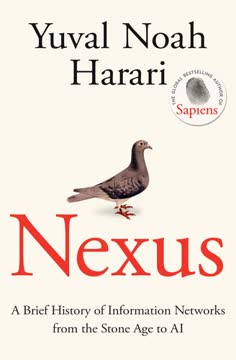
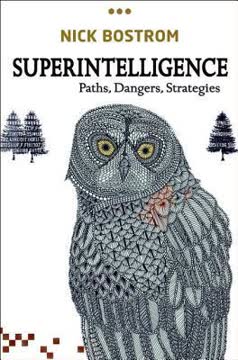
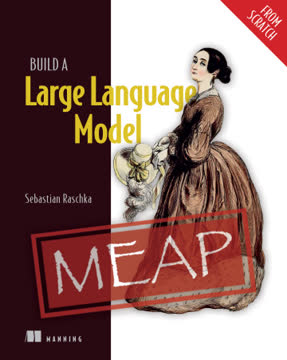
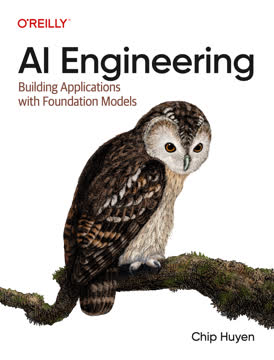
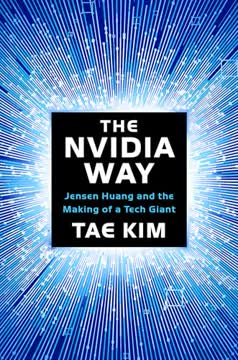
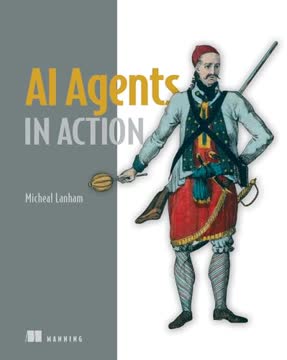
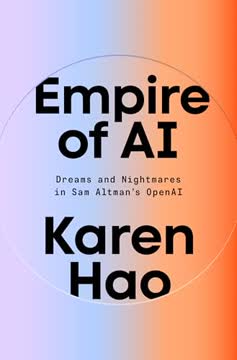
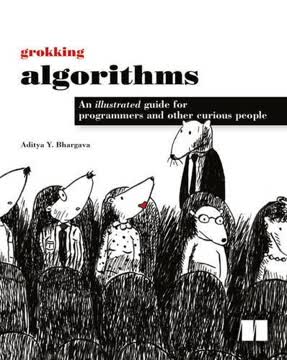

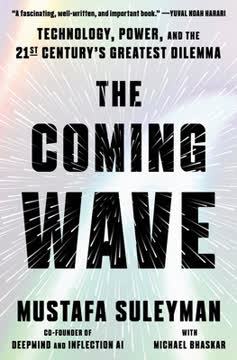
Download PDF
Download EPUB
.epub digital book format is ideal for reading ebooks on phones, tablets, and e-readers.
